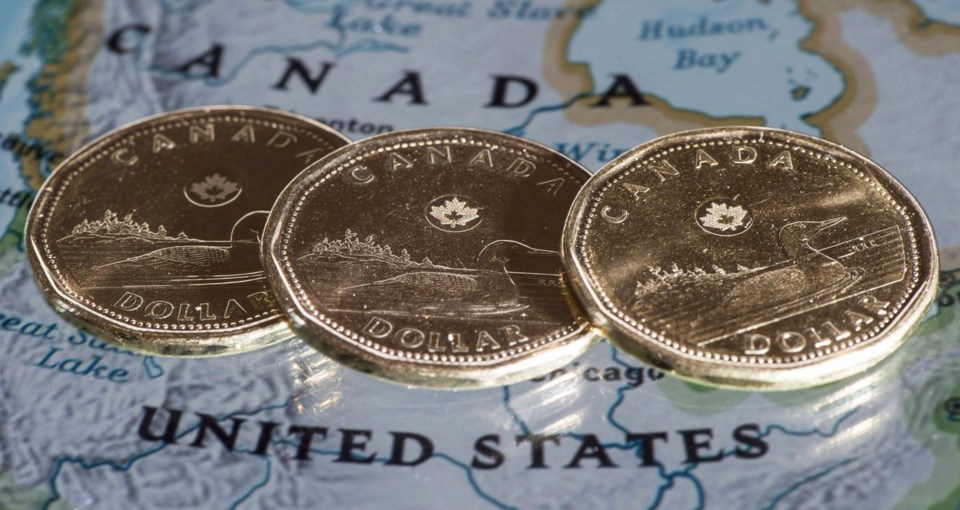TORONTO — Canada's main stock index was down more than 250 points in afternoon trading, while the loonie fell to its lowest level in more than two decades as Canadian exports to the United States face sweeping tariffs starting Tuesday.
The S&P/TSX composite index was down 265.90 points at 25,267.20 by the afternoon after sliding more than 700 points earlier in the day.
The index plunged after U.S. President Donald Trump announced over the weekend that the U.S. would impose tariffs of 25 per cent on Canadian goods and 10 per cent on energy.
Canada has promised to retaliate starting with tariffs on $30 billion of U.S. goods on Tuesday. Ottawa also plans to add another $125 billion in tariffs in 21 days on hundreds of other U.S. goods after consulting with industry.
Meanwhile, stock markets in the U.S. were off their lows of the day after Trump and Mexican President Claudia Sheinbaum put their planned tariffs on hold Monday for a month to give time for further negotiations, and Mexico said it planned to deploy 10,000 members of its national guard to address drug trafficking.
The U.S. and Mexican leaders announced the pause after what Trump described on social media as a “very friendly conversation,” and he said he looked forward to the upcoming talks.
In New York, the Dow Jones industrial average was down 76.16 points at 44,468.50. The S&P 500 index was down 40.23 points at 6,000.30, while the Nasdaq composite was down 210.38 points at 19,417.06.
The Canadian dollar traded for 68.55 cents US compared with 69.04 cents US on Friday.
Colin Cieszynski, portfolio manager and chief market strategist at SIA Wealth Management, said the market reaction suggests some didn't believe Trump would follow through on his tariff threat to Canada.
"Historically, the markets have liked free trade and not liked tariffs, not liked anything that slows the economy or causes problems, whether it's tariffs, whether it's taxes, whether it's regulation," Cieszynski said.
"The markets tend to like free movement of capital and goods and so when you get something like this, it's sizable and it's a surprise."
Cieszynski noted the widespread stock declines to start the trading week, including for banks, industrials and some tech companies.
"Even Canadian companies with big U.S. operations are still taking a hit," he said.
Cieszynski said investors will be watching to see how long, and how far, the loonie continues falling.
"Trump has been threatening tariffs for months, and the Canadian dollar has been sinking for months," he said.
"So from here, it's a matter of how long does it drag on, and does it get worse? It's hard to say but it's possible."
The March crude oil contract was up 16 cents at US$72.69 per barrel and the March natural gas contract was up 31 cents at US$3.36 per mmBTU.
The April gold contract was up US$22.80 at US$2,857.80 an ounce and the March copper contract was up four cents at US$4.32 a pound.
— With files from The Associated Press.
This report by The Canadian Press was first published Feb. 3, 2025.
Companies in this story: (TSX:GSPTSE, TSX:CADUSD)
Sammy Hudes and Craig Wong, The Canadian Press



